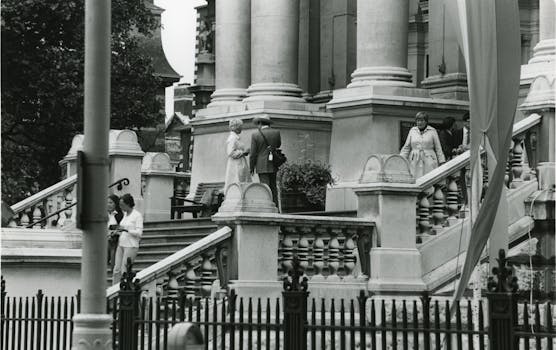
Traveling Through Time: How Europe’s Historical Heritage Shapes Modern Lifestyles in 2025
Traveling Through Time: How Europe’s Historical Heritage Shapes Modern Lifestyles in 2025. Europe, a continent steeped in history and heritage, has long been a hub of cultural and artistic expression. From the ancient civilizations of Greece and Rome to the modern-day metropolises of London and Paris, Europe’s historical heritage continues to shape and influence modern lifestyles in profound ways. In this article, we’ll embark on a journey through time, exploring the enduring impact of Europe’s past on its present and future.
Architecture and Urban Planning
One of the most visible ways in which Europe’s historical heritage shapes modern lifestyles is through its architecture and urban planning. Many European cities boast stunning examples of historical buildings, from medieval cathedrals to Renaissance palaces, which have been meticulously preserved and restored to maintain their original charm. These architectural treasures not only attract millions of tourists each year but also provide a unique backdrop for modern urban life.
In cities like Rome, Florence, and Venice, ancient structures have been seamlessly integrated into modern urban landscapes, creating a fascinating blend of old and new. For instance, Rome’s Colosseum, built in 80 AD, stands alongside modern skyscrapers and bustling streets, while Florence’s Duomo, constructed in the 15th century, dominates the city’s skyline. Similarly, Venice’s canals, lined with historic buildings and ornate bridges, have become a popular destination for contemporary artists, musicians, and writers.
Art and Cultural Expression
Europe’s historical heritage has also had a profound impact on the continent’s art and cultural expression. From the masterpieces of Renaissance painting to the avant-garde movements of the 20th century, European art has long been at the forefront of innovation and creativity. Today, this rich cultural legacy continues to inspire modern artists, designers, and musicians, who draw upon the past to create new and exciting works.
In cities like Paris, Berlin, and Amsterdam, museums and galleries showcase an incredible array of historical and contemporary art, from the works of Monet and Van Gogh to those of modern masters like Picasso and Warhol. These cultural institutions not only attract visitors from around the world but also provide a platform for emerging artists to showcase their talents and push the boundaries of creative expression.
Cuisine and Traditions
Europe’s historical heritage has also shaped the continent’s cuisine and traditions, with many modern dishes and customs drawing upon ancient roots. From the rich flavors of Italian pasta and pizza to the hearty stews and beers of Germany and Belgium, European cuisine is a testament to the power of cultural exchange and adaptation.
Similarly, many European traditions, such as the Spanish siesta, the French joie de vivre, and the Italian dolce far niente, have become an integral part of modern lifestyles, promoting a sense of community, relaxation, and enjoyment. These customs, often rooted in historical practices and rituals, have been passed down through generations, providing a sense of continuity and connection to the past.
Modern Lifestyles and the Future of Europe
As we look to the future, it’s clear that Europe’s historical heritage will continue to play a vital role in shaping modern lifestyles. From sustainable urban planning to innovative cultural expression, the continent’s rich past will provide a foundation for addressing the challenges of the 21st century.
By embracing and celebrating its historical heritage, Europe can create a unique and compelling narrative, one that balances tradition and innovation, preserving the best of the past while embracing the possibilities of the future. As we travel through time, exploring the timeless influences of Europe’s historical heritage, we’re reminded of the enduring power of culture and tradition to shape our lives and our world.





